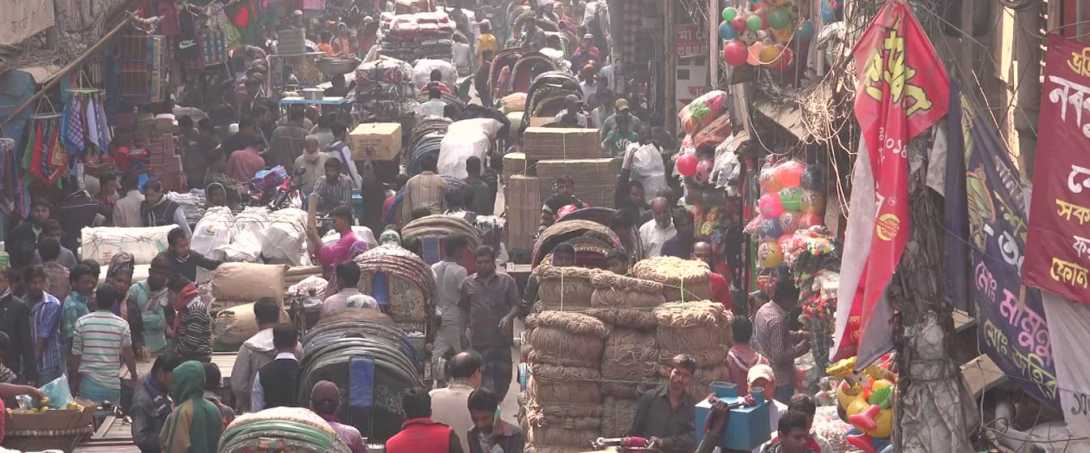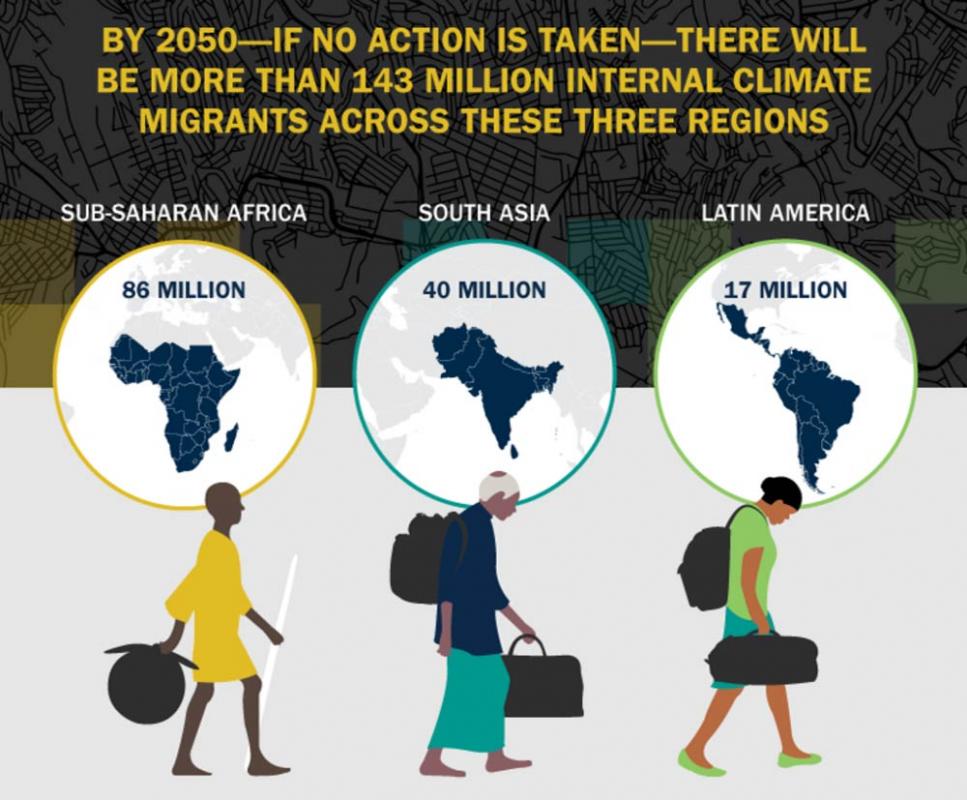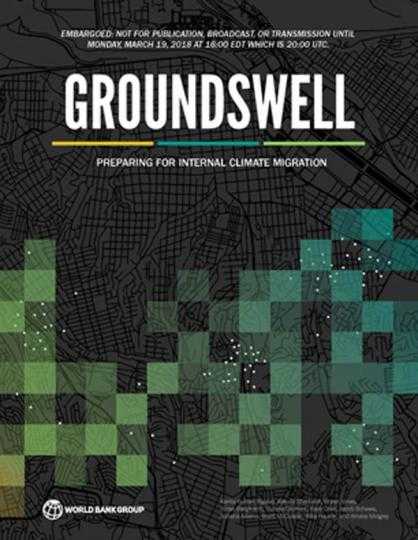#All4TheGreen 2018 - Closing Remarks
Closing Remarks of the #All4TheGreen - Mobilizing Climate Science Event, in Bologna with:
Greening Artificial Intelligence: What A.I. Means for Sustainability #All4TheGreen
Presentation - Greening Artificial Intelligence: What A.I. Means for Sustainability at #All4TheGreen - Mobilizing Climate Science Event, in Bologna with:
Panel Discussion - Reshaping Our Future: The IPCC Looking Ahead #All4TheGreen
Reshaping Our Future: The IPCC Looking Ahead Panel Discussion at #All4TheGreen - Mobilizing Climate Science Event, in Bologna with:
Panel Discussion - Climate Action for Sustainable Development #All4TheGreen
Climate Action for Sustainable Development Panel Discussion at #All4TheGreen - Mobilizing Climate Science Event, in Bologna with:
Panel Discussion - Climate Knowledge For Ambitious Action #All4TheGreen
Climate Knowledge For Ambitious Action Panel Discussion at #All4TheGreen - Mobilizing Climate Science Event, in Bologna with:
#All4TheGreen 2018 - Opening Remarks
Opening Remarks of the #All4TheGreen - Mobilizing Climate Science Event, in Bologna with:
|
Climate Change Could Force Over 140 Million to Migrate Within Countries by 2050: World Bank Report
By

The worsening impacts of climate change in three densely populated regions of the world could see over 140 million people move within their countries’ borders by 2050, creating a looming human crisis and threatening the development process, a new World Bank Group report finds.
But with concerted action - including global efforts to cut greenhouse gas emissions and robust development planning at the country level – this worst-case scenario of over 140m could be dramatically reduced, by as much as 80 percent, or more than 100 million people.
The report, Groundswell – Preparing for Internal Climate Migration, is the first and most comprehensive study of its kind to focus on the nexus between slow-onset climate change impacts, internal migration patterns and, development in three developing regions of the world: Sub-Saharan Africa, South Asia, and Latin America.
It finds that unless urgent climate and development action is taken globally and nationally, these three regions together could be dealing with tens of millions of internal climate migrants by 2050. These are people forced to move from increasingly non-viable areas of their countries due to growing problems like water scarcity, crop failure, sea-level rise and storm surges.
Click on the image to see the infographic
These “climate migrants” would be additional to the millions of people already moving within their countries for economic, social, political or other reasons, the report warns.
World Bank Chief Executive Officer Kristalina Georgieva said the new research provides a wake-up call to countries and development institutions.

"We have a small window now, before the effects of climate change deepen, to prepare the ground for this new reality. Steps cities take to cope with the upward trend of arrivals from rural areas and to improve opportunities for education, training and jobs will pay long-term dividends. It’s also important to help people make good decisions about whether to stay where they are or move to new locations where they are less vulnerable."

Kristalina Georgieva, World Bank Chief Executive Officer
The research team, led by World Bank Lead Environmental Specialist Kanta Kumari Rigaud and including researchers and modelers from CIESIN Columbia University, CUNY Institute of Demographic Research, and the Potsdam Institute for Climate Impact Research - applied a multi-dimensional modeling approach to estimate the potential scale of internal climate migration across the three regions.
They looked at three potential climate change and development scenarios, comparing the most “pessimistic” (high greenhouse gas emissions and unequal development paths), to “climate friendly” and “more inclusive development” scenarios in which climate and national development action increases in line with the challenge. Across each scenario, they applied demographic, socioeconomic and climate impact data at a 14-square kilometer grid-cell level to model likely shifts in population within countries.
This approach identified major “hotspots” of climate in- and out-migration - areas from which people are expected to move and urban, peri-urban and rural areas to which people will try to move to build new lives and livelihoods.

“Without the right planning and support, people migrating from rural areas into cities could be facing new and even more dangerous risks. We could see increased tensions and conflict as a result of pressure on scarce resources. But that doesn’t have to be the future. While internal climate migration is becoming a reality, it won’t be a crisis if we plan for it now.”

Kanta Kumari Rigaud, report’s team lead

The report recommends key actions nationally and globally, including:

 Cutting global greenhouse gas emissions to reduce climate pressure on people and livelihoods, and to reduce the overall scale of climate migration;
Cutting global greenhouse gas emissions to reduce climate pressure on people and livelihoods, and to reduce the overall scale of climate migration;
 Transforming development planning to factor in the entire cycle of climate migration (before, during and after migration);
Transforming development planning to factor in the entire cycle of climate migration (before, during and after migration);
 Investing in data and analysis to improve understanding of internal climate migration trends and trajectories at the country level.
Investing in data and analysis to improve understanding of internal climate migration trends and trajectories at the country level.|
Meet the Human Faces of Climate Migration
By

A new World Bank report has found that by 2050 the worsening impacts of climate change in three densely populated regions of the world could see more than 140 million people move within their countries’ borders. With concerted action, however, including global efforts to cut greenhouse gas emissions and robust development planning at the country level – this worst-case scenario could be dramatically reduced, by as much as 80 percent, or 100 million people.
The report identifies “hotspots” of climate in-and out-migration. These include climate-vulnerable areas from which people are expected to move, and locations into which people will try to move to build new lives and livelihoods.
People move for many reasons – economic, social, and political. Now, climate change has emerged as a major driver of migration, propelling increasing numbers of people to move from vulnerable to more viable areas of their countries to build new lives.
The newly released World Bank report, Groundswell: Preparing for Internal Climate Migration, analyzes this recent phenomenon and projects forward to 2050. Focusing on three regions — Sub-Saharan Africa, South Asia, and Latin America – the report warns that unless urgent climate and development action is taken, these three regions could be dealing with a combined total of over 140 million internal climate migrants by 2050. These people will be pushed out by droughts, failing crops, rising sea levels, and storm surges.
But there is still a way out: with concerted action – including global efforts to cut greenhouse gas emissions, combined with robust development planning at the country level –the number of people forced to move due to climate change could be reduced by as much as 80 percent – or 100 million people.

"We have a small window now, before the effects of climate change deepen, to prepare the ground for this new reality. Steps cities take to cope with the upward trend of arrivals from rural areas and to improve opportunities for education, training and jobs will pay long-term dividends. It’s also important to help people make good decisions about whether to stay where they are or move to new locations where they are less vulnerable."

Kristalina Georgieva, World Bank Chief Executive Officer

Climate migrants: the human face of climate change
The report looks closely at three country examples: Ethiopia, Bangladesh, and Mexico, all countries with very different climatic, livelihood, demographic, migration and development patterns.
It is worth taking a moment to remember that behind all trends there are real people with dreams, hopes, and aspirations. We met three people whose lives have been transformed in different ways as they have dealt with the impacts of climate change.
Watch Monoara Khatun's story
Monoara Khatun is a 23-year-old seamstress from Kurigram, Bangladesh. Her village has been flooded many times, and this has led to increasing unemployment and food scarcity.
“Floods come every year, but this year the situation is worse,” says Monoara. “Because of the flooding, there are not a lot of opportunities for work, especially for women in our village. My house is badly affected by this year’s flood, and many rice paddies got washed away.” Monoara moved to the capital city, Dhaka where she was connected to the NARI project, a World Bank initiative designed to provide training, transitional housing, counseling and job placement services for poor and vulnerable women. Since then, she has been able to support her family back in Kurigram and has gained financial independence. Monoara’s story highlights the importance of good development planning through programs like NARI, helping countries be better prepared for increased migration.
According to the report’s “pessimistic” scenario, South Asia is projected to have 40 million internal climate migrants by 2050, with Bangladesh contributing a third of that number. Right now, close to half of Bangladesh’s population depends on agriculture, so changes in water availability and crop productivity could drive major shifts in population. Bangladesh has already undertaken initiatives in the water, health, forestry, agriculture, and infrastructure sectors to mainstream climate adaptation into its national development plans. Several adaptation programs are underway, including a program to enhance food security in the northwest of the country and another to encourage labor migration from the northwest during the dry season.
Watch Wolde Danse's story
Wolde Danse, a 28-year-old from Ethiopia, is also turning adversity into a chance to change the course of his life. The eighth of 16 children, he left his father’s small farm in a drought-stricken part of his country and moved to the city of Hawassa in search of new opportunities: “In the planting season, it wouldn’t rain, but when we didn’t want it, it would rain. This created drought, and because of this, I didn’t want to suffer anymore.” After some initial struggles, Wolde enrolled in Ethiopia’s extensive urban safety net program, and now he receives a small salary for supervising street cleaners. As part of the program, Wolde can attend Hawassa’s university without paying tuition, and he’s planning to finish his studies to benefit his country and his family.
Without concrete climate and development action, Sub-Saharan Africa could have 86 million internal climate migrants by 2050, with Ethiopia one of the most vulnerable countries to climate change in Africa, due to its reliance on rain-fed agriculture. Ethiopia’s population is likely to grow by 60-85 percent by 2050, placing additional pressure on the country’s natural resources and institutions. Ethiopia is taking steps to diversify its economy and prepare for increased internal migration.
Sometimes, however, migration is not the answer.
Watch Javier Martinez's story
Some communities are finding ways to deal with climate change that don’t require migration. Javier Martinez, 26, and his brother have chosen to stay in their community in Oaxaca, Mexico and expand their carpentry business. They have been able to do so thanks to a sustainable forestry program that has helped to attract investors and enabled the community to adapt to a changing climate while building economic opportunities. Javier explains: “At the forest level there is employment, in businesses there is employment, so there is not a strong need to go away because in the community there is a wide range of opportunities.” Efforts like these around the world to build more sustainable forestry programs are paying climate dividends globally and supporting economies like Javier’s locally.
According to the report’s worst-case scenario, Latin America is projected to have 17 million internal climate migrants by 2050. Mexico is a large and diverse country in terms of physical geography, climate, biodiversity, demographic and social composition, economic development, and culture. Rain-fed cropland areas are likely to experience the greatest “out-migration”, mainly as a result of declining crop productivity. There will also be increases in average and extreme temperatures, especially in low-lying (and therefore hotter) regions, such as coastal Mexico and especially the Yucatan. However, as an upper-middle-income country with a diversified and expanding economy, a predominantly urban population, and a large youth population entering the labor force, Mexico has the potential to adapt to climate change. Still, pockets of poverty will persist, given that climate-sensitive smallholders, self-employed farmers and independent farmers tend to have higher than average poverty rates.
Taking action
Monoara, Wolde and Javier’s stories tell us that, while internal climate migration is a growing reality in many countries, it doesn’t have to be a crisis. With improved policies, countries have the chance to reduce the number of people forced to move due to climate change by as much as 80 percent by 2050.
The report finds that countries can take action in three main areas:

 1. Cut greenhouse gases now
1. Cut greenhouse gases nowStrong global climate action is needed to meet the Paris Agreement’s goal of limiting future temperature increase to less than 2°C by the end of this century. However, even at this level of warming, countries will be locked into a certain level of internal climate migration. Still higher levels of greenhouse gas emissions could lead to the severe disruption of livelihoods and ecosystems, further exacerbating the conditions for increased climate migration.

 2. Embed climate migration in development planning
2. Embed climate migration in development planningThere is an urgent need for countries to integrate climate migration into national development plans. Most regions have laws, policies, and strategies that are poorly equipped to deal with people moving from areas of increasing climate risk into areas that may already be heavily populated. To secure resilience and development prospects for everyone affected, action is needed at every phase of migration (before, during and after moving).

 3. Invest now to improve data on the scale and scope of local climate migration
3. Invest now to improve data on the scale and scope of local climate migrationMore investment is needed to better understand and contextualize the scale, nature, and magnitude of climate change-induced migration. Evidence-based research, complemented by country-level modeling, is vital. In support of this, new data sources, including from satellite imagery and mobile phones, combined with advances in climate information, can help countries improve the quality of information about likely internal migration.
This report, which focuses on three regions—Sub-Saharan Africa, South Asia, and Latin America that together represent 55 percent of the developing world’s population—finds that climate change will push tens of millions of people to migrate within their countries by 2050. It projects that without concrete climate and development action, just over 143 million people—or around 2.8 percent of the population of these three regions—could be forced to move within their own countries to escape the slow-onset impacts of climate change.





